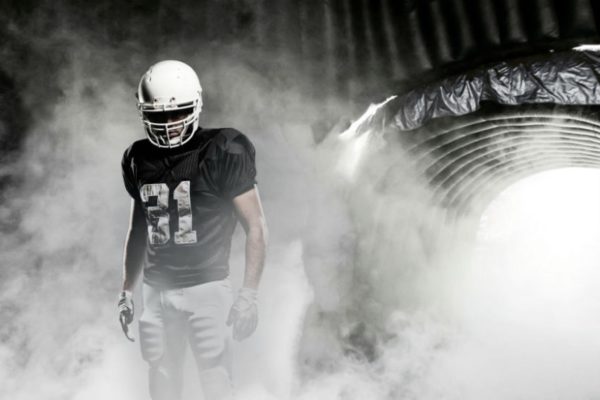The NFL playoffs are nearly here and undoubtedly some player on some team will get hit in the head and fall under the newly instituted league concussion protocol.
It’s a scenario that happens now weekly in the NFL. Although it is a step in the right direction, much more still needs to be done to cut down on the number of concussions.
The popularity of contact sports in America, namely football, and the recent proliferation of studies on the significance of concussions have led to a growing public interest in the connection between sports-related head injuries and the neurodegenerative disease called chronic traumatic encephalopathy, or CTE, which is characterized by a build-up of an abnormal protein that is associated with eventual cell death and degeneration of brain tissue.
Because CTE diagnosis is limited to postmortem analysis, brain banks must rely on donated brains. Therefore, the high number of reported cases in previous professional athletes is likely not a realistic representation of the incidence and prevalence among all football players because the vast numbers of players never contribute their brains for examination. That said, the number of CTE diagnoses thus far may only show the most severe cases, and there probably are less severe effects that currently are not being studied.
What is clear from the emerging research is that hitting your head, especially numerous times, can be much worse for you than ever previously considered.
For the most part, the public is already getting the point on a lot of this. Parents, for instance, are increasingly keeping their children out of youth football. Enrollment of boys ages 6-14 in youth football saw a 27.7 percent drop from 2010 to 2015 across the U.S.
As researchers who study concussions and the effects of neurotrauma on mental processes, we believe there are some simple steps that the NFL, college athletics and youth sports can take right now to help reduce the rate of concussions.
For the NFL, the next logical step to help prevent concussions should involve significant rule changes and equipment improvements. Some of those have already been implemented such as preventing defensive players from “spearing,” where they lead with their head.
The results of these changes need to be examined and further changes implemented. It is interesting that rugby is generally thought of as a more brutal sport, but the incidence of concussion injury appears significantly less.
Why? One factor is that with the lack of helmets, high-body tackles are banned, which has the benefit of taking the head out of the line of force. The NFL has been considering a similar rule change but as of yet, it has not been adopted.
Once injuries do occur, the NFL should continue to apply best practice standards, with guidelines set by an independent board of expert physicians. The additional piece is to find a way to make the process of formulating standards more dynamic because we are learning new information at a rapid pace.
Decision making should also be removed from the profit motive of professional sports. Postinjury decision making, such as when a player should return to play, should be in the hands of independent physicians, not the coaching staff.
While the NFL should continue to implement rule changes that work to reduce potential head injury, youth sports could be a test bed for new approaches. Moreover, if youth football players are trained in safer play, such as keeping tackles low, then those players will bring those safer practices to college and pro sports.
Government, universities and industry partners also need to continue to apply focused effort and significant research funding to better understand sports-related concussions, particularly with respect to repeated mild injury and optimal treatment response/return to play schedules and development and testing of point-of-injury devices for objectively diagnosing concussion. The new UIL project that was recently announced in the state is a good start.
Finally, we need education and the increased dissemination of information so that the public at large understands what we know and what we don’t know.
Football is one of the great American sports, but as we become more aware of the long-term effects of continually getting your head hit, it is becoming increasingly difficult to ignore the serious risks.
Molly Farrell is a research coordinator for sports concussion studies at The University of Texas at Austin. David Schnyer is a professor of psychology at The University of Texas at Austin.
A version of this op-ed appeared in the Houston Chonicle, Dallas Morning News and the Austin American Statesman.
To view more op-eds from Texas Perspectives, click here.
Like us on Facebook.




